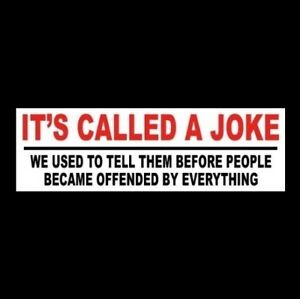It has been almost fifteen years but I still recall that incident like it was yesterday. I guess it was because it was the first major issue I had as an employee. The incident had happened at my first ever job, right after my National Service, so it was really a big deal for me. I vividly recall how disturbing the whole situation was at the time. It was so disconcerting that for a while, I even thought I was going to lose my job.
What had happened was that a customer I had always seen as a “friend” came to the banking hall with a complaint. After hearing what he had to say, I realized it was really not a big deal and I believed I even cracked a joke to indicate that everything was going to be alright. Apparently, the laughter my attempt at a joke elicited from those around did not go down well with the customer. While all of us—the customer included—laughed about the matter, apparently, the customer felt we were laughing “at” him and not “with” him.
He left the office after we had sorted the matter out but he lodged a formal complaint and mentioned in his letter that I had made a joke about the matter when he complained. It was not a particularly enjoyable episode for me. Thankfully, my superiors, who knew the kind of person I was, realized that I meant no malice. I escaped with just a verbal warning—no written query. However, that incident taught me a valuable lesson about the use of humour at the front line.
It is a fact that humour is a universal trait exhibited by all human beings. There is not a tribe or a culture anywhere in this world, in all of recorded history, where there is nothing like humour. Humour is one of those powerful but equally volatile weapons that every front-line employee (FLE) has at his or her disposal.
The power of humour however is in the way it is employed and the situation or circumstances under which it is employed. Use rightly, humour has so many benefits. Marketers, communicators, advertisers, etc. have for years employed humour in getting their messages across successfully. Many world leaders have warmed their way into the hearts of legions of followers just with the power of humour.
In the workplace, one of the most important traits of humour is its ability to diffuse even the most tensed of situations. In a situation where there has been a major service experience failure, the appropriate deployment of humour can ease all the tension. When you are able to get customers to see the funny side of the incident and the even get the customer laughing, then you have used humour well.
According to a study published in the August 2021 edition of the Journal of Business Research, humour works. And humour works because it provides the kind of relief that makes it easier for the aggrieved customer to see things more clearly. The ability of humour to clear the red mist of anger that might cloud the customer’s judgment is what makes it so powerful in deescalating tensed situations.
There are certain characteristics, however, of the kind of humours that are effective in appeasing aggrieved customers. First of all, humour will work well if it comes out naturally. Good humour must not be forced. It must not appear canned. I have learnt that the quickest way to kill a good joke is to start with the line, “Let me tell you a joke” or “Let me tell you something funny that will make you laugh”.
Also, the aforementioned Journal of Business Research study, titled “No laughing matter, or a secret weapon? Exploring the effect of humor in service failure situations” also inferred that the humour that works is the self-deprecating one. By making yourself the object of the joke, the customer is better able to appreciate the humour and by so doing become more amenable to letting go of whatever anger the one has. Another reason why the self-deprecating humour works is that it shows to the customer that the employee in question is, after all, human and therefore bound to occasionally make mistakes.
Also, the kind of humour that appeases aggrieved customers must be particularly good or extremely funny. When things have not gone according to plan, even a good joke will not suffice. The joke must be far better than what normally passes for funny. The last thing you want to do in the presence of an extremely irritated customer is to whip out a dry, irritating joke.
Another characteristic of humour that works is that it must be related to the situation at hand. If the situation has to do with apples, it helps if the funny story is not about robots or aliens, with absolutely no relation to apples or any other fruit for that matter. A joke must be used with a specific purpose in mind, not merely because it is funny.
It is also important to note that no matter how well-crafted a joke is, it will fail to hit its mark if the time is wrong. Saying the right joke at the wrong time can backfire. When the customer is angry and screaming his head off, the last thing the customer wants to hear is a joke. A humorous statement would seem to belittle the customer’s concern—and no customers appreciates any attempt to disparage their concerns.
There are several studies that prove that humour has an effective on recall. In other words, if the customer service professional is able to use the humour successfully, then the customer will have very fond memories of the incident. No matter how unpleasant the original incident or service failure might have been, the aftermath, infused with appropriate humour, will leave a pleasant aftertaste—and customers with fond memories of a brand experience are sure to return.
Of all the reasons why, humour can be such an important tool for front line work, the fact that humour increases likability is most appealing to me. Studies after studies have shown that people like people who put a smile on their faces or who make them laugh. FLEs who are able to effectively use humour tend to become the darlings of customers. The extension of the likability factor is that customers tend to be more forgiving of FLEs they like. Likability and leniency seem to be closely related when it comes to service experience.
There is one consideration that any customer-facing employee must make before employing the power of humour to diffuse a tensed situation. This is the kind of customer involved in the situation. It is important that the FLE has a good idea of who that customer is before making any kind of joke. There are customers who will not appreciate any kind of humour. For such customers, the FLE must stay away from humour, no matter how tempting the situation.
There are several studies that suggest that customer characteristics has a lot to do with the kind of jokes the one finds funny. For instance, the educational level of an individual has an effect on the humour appreciation of the one. There are some jokes that only those belonging to a certain group would understand.

There are also studies that prove that even gender has an effect on an individual’s appreciation for certain kinds of jokes. It has been proven that men appear to enjoy aggressive jokes with sexual slants more than women do. However, later studies have suggested that if the one telling the sexual joke is a female, other females might not find it so repulsive. This means that male customer service employees should stay far away from any kind joke with sexual undertones when they are dealing with female customers. Researchers have however found that in general, women appear to have a greater appreciation for nonsensical humour.
Even culture, race and tribe can have an effect on whether the individual finds a particular joke funny or not. There are certain jokes that one tribe would find funny because of where they are coming from. However, those same jokes will not even register with others from a different tribe. Even within the same tribe or culture, different backgrounds would have different effects when it comes to appreciation of humour. A camel joke will definitely have different meaning and appreciation for an Arab leaving in the Sahara Desert than it would for another Arab who has spent his whole life in cosmopolitan Abu Dhabi.
It is important to note that there will be those times when no amount of humour will work, for so many reasons. When that happens and humour fails to appease an angry customer, the FLE can turn to a technique that has been tried, tested and proven true—good old apology. An apology, in particular the sincerest type, is a good way to appease the aggrieved customer. If the apology still does not appease the aggrieved customer, then alternatively, some form of compensation can do the job right. If the opportunity avails itself for a combination of a joke, an apology and then some form of compensation, then the customer service employee must take advantage of the situation.
Clearly, all humour is not created equal. There is humour and there is humour. Smart customer-handling professionals know when to use what and at what time. Front line employees who know what they are about know that so many things must be right for humour to work. Therefore, they will only use humour when they know it will hit its mark. They know that if humour is not used appropriately, the joke will be on the employee and on the organisation.










